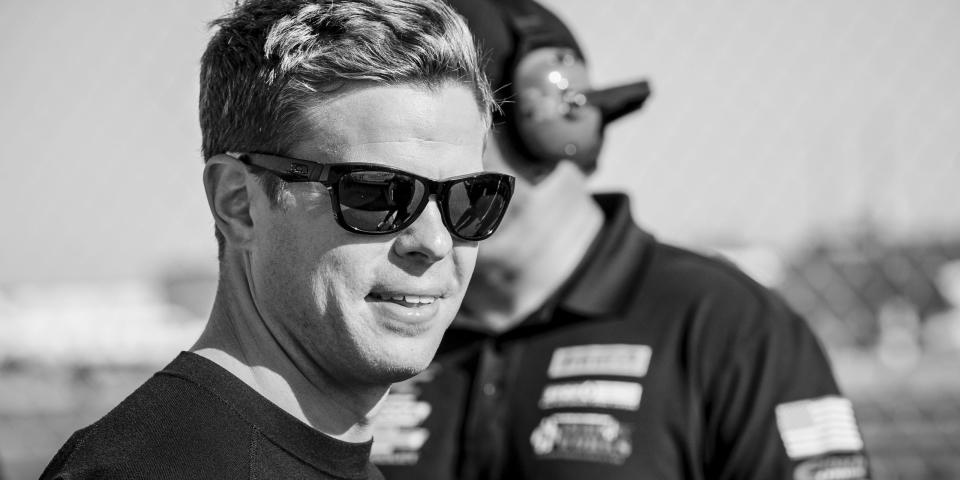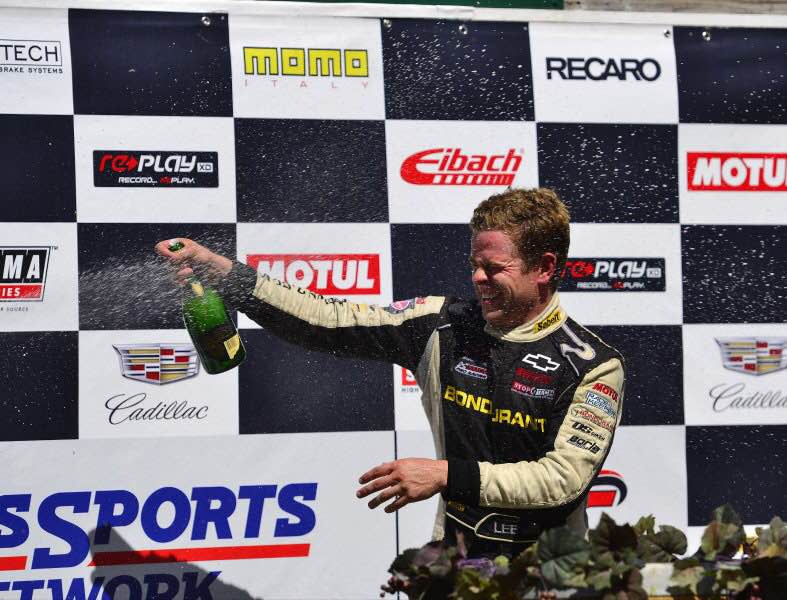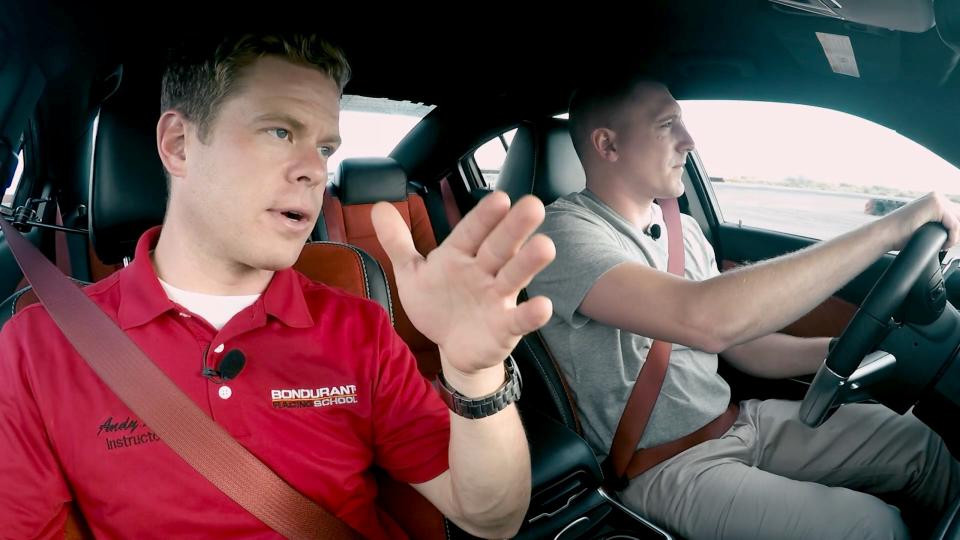Here's What It's Like To Be a Bondurant Instructor

Before he became a racing instructor with the Bob Bondurant Racing School, Andy Lee ran through a gamut of jobs: telemarketer, janitor, cook, waiter, door-to-door salesman, he recalls. All the usual slogs. On one sales run, he knocked on the wrong door, "and before I could utter my sales pitch, the guy scolded me and threw me down a flight of stairs!"
"Most of my experience at the Bondurant school came behind the wheel of a Camaro or Corvette so when I showed up in Pirelli World-Challenge in 2012 it was like racing my easy chair."
Lee, 33, joined Bondurant shortly after he left high school, showing up every week "to annoy the shop manager," he says. He spent three years washing cars, then repairing them, then racing shifter karts. In 2008 he tried out for the Volkswagen Jetta TDI Cup Series, and all that karting experience paid off: from 500 applicants, he was picked to join 30 drivers. He placed second in the championship a year later. From there it was to the Pirelli World Challenge in a Chevrolet Camaro, "my baby!" he says. "Most of my experience at the Bondurant school came behind the wheel of a Camaro or Corvette so when I showed up in Pirelli World-Challenge in 2012 it was like racing my easy chair."
Today, he competes in the IMSA Continental Tire Series with the Porsche Cayman of Goldcrest Motorsports, a far more challenging car to drive fast: "the Cayman wants you off the brake and back on power through the turns. Just the opposite of the Camaro."
Unusually, for a professional racer, Lee didn't begin racing until he was 21 years old. Many pro drivers practically slide from the womb onto a go-kart, it seems; the younger you are, the more in tune with your skills, your reflexes, and the rigors of car control you are. By the age Lee was when he started, they've already reached the highest echelons of motorsport. "So many pro race drivers come from wealthy families that are able to finance their careers from a very young age," he says. "I didn't come from money, so I knew working at the school would give me the best opportunity to hone my skills."

So, Lee had some catching up to do. Unsurprisingly, all that time at Bondurant has given him quite the edge: "The ability to practice on an almost daily basis has allowed me to catch up to drivers who had been racing since they were in elementary school." It paid off. In 2012, he became the Pirelli World Challenge's Rookie of the Year, and placed second-a good year, to say the least, and a career that will only improve while instructing at Bondurant.
Bob Bondurant was a sports car racer racking up victories in Europe, and competing at Le Mans, before he returned to America and founded the racing school that would make him famous. When he started, the notion of a school that taught high-performance driving was still an unusual concept, but today it's a massive industry that caters to all kinds: kids looking to go pro, 80-year olds who want to get the most out of their own cars, corporate events 300 employees strong, wives looking for an anniversary gift for their husbands, and vice versa.
"Everyone climbs in assuming it's going to be leisurely until we ask them buckle their seat belts."
Lee guesses that he's probably taught five thousand students. The most popular program he teaches is the four-day Forza program, where students with no track experience at all learn all the basics of competitive driving. It also includes everything required to earn an entry-level racing license. Many of his students go all in to racing afterwards. Some of his students have remained good friends after their time there.
"I love to see my students leave the school with more confidence behind the wheel," said Lee. "Whether they decide to pursue their racing fantasies or not, the techniques have a significant impact on their street driving skills as well."

Every program starts the same: a ride around one of the Chandler, Arizona facility's racetrack, at full tilt, from one of the instructors-in an airport van. "Everyone climbs in assuming it's going to be leisurely until we ask them buckle their seat belts. It's always fun to see the look of terror on faces in the rear view mirror as we slide these monstrous vehicles around a corner!"
Lee figures that the most difficult part of his job is teaching the lost art of heel-toe downshifting. Not coincidentally, it's also one of the hardest concepts for students to grasp. He's seen many students struggle with correcting oversteering: a lifetime of driving habits might not always work when recovering from a skid, and even in four days it can take plenty of practice to figure it all out. "Fortunately," he says, "we have custom built skid cars that allow us to practice proper slide recovery at a relatively low speed."
But even after over a decade, Lee still considers the best part of his job to be the practice time. Now more so than ever, seeing as he's finally achieved the one thing he wanted since he was a boy: to be a professional racing driver.

 Yahoo Autos
Yahoo Autos 